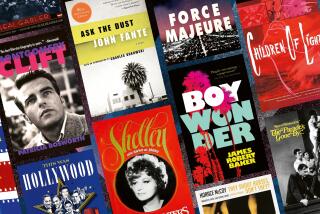Kael: Outspoken in Print--and in Person
Pauline Kael was the most lauded film critic of her time. She wrote with an unparalleled vigor and passion, with brilliant insight and a ferocious wit. She showed that film criticism was worth taking seriously at the same time she was entertaining her readers as no other reviewer could. Her reviews in the New Yorker were must reading for anyone would cared about movies.
There was a remarkable consistency between Kael in person and in print, and she was as outspoken at the beginning of her career as she was at the end of her life. She was funny yet formidable. She would unleash a stream of spontaneous, outrageous remarks about people--they were hilarious, as long as you weren’t the target.
Even in retirement Kael’s quips about people who review movies as well as those who make them had a way of circulating swiftly throughout the critical fraternity. Kael would champion young movie reviewers she admired every bit as strongly as her favorite filmmakers--and she could dismiss them as fervently as she had once embraced them. Being friendly with Kael was fun, especially in the earlier years, but it could be tricky.
Kael first rose to prominence in sparring with Andrew Sarris, who had started reviewing for the Village Voice in the ‘50s. At this time Kael was running a pair of tiny revival theaters on Telegraph Avenue in Berkeley, and the notes she wrote for the films she screened became collector’s items, cherished for their verve and candor.
The early ‘60s was an exciting moment for a young film reviewer to begin a career, just as Sarris published his famous survey of American directors in Film Culture. In one fell swoop Sarris restored the reputation of the American cinema at a time when imported art house cinema was reaching full flower.
In doing so Sarris introduced from France the controversial and widely misunderstood auteur theory, which held that the best films were those that bore the stamp of the director, regardless of whether he or she wrote the script, and that the work of such directors was marked by a distinctive and recognizable vision of the world. Sarris made his case in deliberately sweeping terms, and Kael began challenging his assertions in bristling articles in Film Quarterly and Sight and Sound.
After a brief stint at McCall’s, where she notoriously trashed “The Sound of Music,” Kael landed at the ideal place, the New Yorker, at the ideal time, just as the Vietnam War was throwing American society into turmoil. Hollywood, was in turn opening the gates to a new generation of filmmakers who would make the ‘70s Hollywood’s last truly creative decade. Kael and the ‘70s were made for each other, and she championed, among others, Robert Altman and Sam Peckinpah, auteurs both.
As Kael rose in prominence young critics tended to regard themselves--or be regarded by others--as either Sarrisites or Paulettes. While Sarris declared, “I want no acolytes,” Kael welcomed them eagerly. As the years went by and she increasingly despaired of Hollywood movies, it became more and more important to her to use her influence in placing her followers at key publications around the country.
Being a follower of hers must surely have been even dicier than being a friend to her, for Kael was as fearless in person as she was in print. More than one critic was under the impression that he or she was considered a friend only to experience humiliation by Kael.
There seemed to be, as hard as it is to believe, a certain naivete to her; she really did expect her withering critiques not to be taken personally by their targets. Yet, as typical with people as caustic as she was, she could be vulnerable, at least in earlier days, before she became the Empress Dowager of American film criticism.
Kael’s prickly personality pales beside--yet is at one with--the high level of her achievement. She had both the power to change one’s opinion of a film, or failing that, commanding respect by the sheer force of her argument. “I’d rather be panned by Kael than praised by Rex Reed,” Billy Wilder once confided. Kael made people feel uncomfortable both in her presence and in print. She wouldn’t have had it any other way.
More to Read
Only good movies
Get the Indie Focus newsletter, Mark Olsen's weekly guide to the world of cinema.
You may occasionally receive promotional content from the Los Angeles Times.










